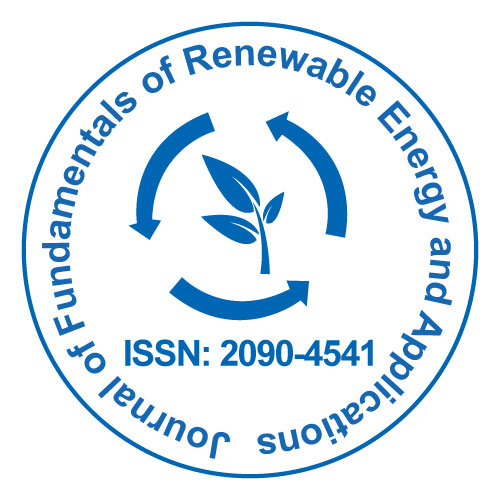
Journal of Fundamentals of Renewable Energy and Applications
Open Access
ISSN: 2090-4541
+44 1300 500008

ISSN: 2090-4541
+44 1300 500008
Short Communication - (2023)Volume 13, Issue 2
Consumers can obtain renewable energy by subscribing to green electricity from their utility at a price premium or by installing household solar. These possibilities can be characterized as substitutes or complements in economic theory. The virtual and physical possibilities are viewed as substitutes. A rise in the relative cost of solar installation is linked to fewer solar installations and increased demand for green electricity. The cost of green electricity does not explain household solar installations. This has consequences for the advertising of renewable procurement alternatives as well as long-term planning for dispersed as opposed to utility-scale renewables [1].
The renewable energy by contracting to green electricity at a premium or installing domestic solar. Some CCAs offer additional green power at a price premium in addition to increasing renewable contents as part of their basic service. As the number of CCAs increases, more consumers may engage in green electricity programmes, thus raising the need for solar installation. It has a conceptual framework as well as empirical evidence to assess the demand for virtual like green power and physical like domestic solar installation procurement choices [2].
Renewable energy imperative
The accelerating effects of climate change, driven primarily by the emission of greenhouse gases from burning fossil fuels, have underscored the necessity of transitioning to renewable energy sources. Renewable energy, derived from naturally replenishing sources, offers a sustainable and low-impact alternative to fossil fuels. Among various renewables, solar energy shines as a powerful contender due to its abundant availability and versatility [3].
Solar energy advantages
Solar energy mobilize the power of the sun, a near-infinite source of clean energy. Unlike fossil fuels, solar energy production does not release harmful emissions or contribute to air pollution, making it a critical component of any strategy to combat climate change. Additionally, solar installations can be deployed on various scales, from residential rooftops to vast solar farms, enabling decentralized energy production and reducing reliance on centralized power plants [4].
Environmental conservation
Beyond reducing carbon emissions, solar installations has a main role in preserving natural ecosystems. Fossil fuel extraction and combustion lead to habitat destruction like air, water pollution and ecosystem degradation. Solar energy, being a nonintrusive technology, minimizes such environmental impacts, safeguarding biodiversity and natural landscapes [5].
Technological advancements
Advancements in solar technology have increased its efficiency and affordability, making it an increasingly attractive option. Innovations like photovoltaic cells, concentrated solar power, and thin-film technologies have expanded the possibilities of solar energy generation. Research and development continue to drive down costs and improve performance, making solar installations more accessible to a broader range of communities and regions [6].
Challenges and solutions
Despite its numerous advantages, solar energy deployment is not without challenges. Intermittency, limited energy storage capacity, and the need for suitable infrastructure can create obstacles to widespread adoption. However, these challenges are being addressed through the integration of energy storage systems, smart grid technologies, and supportive policy frameworks. Governments and private entities are investing in research to unlock the full potential of solar energy and mitigate its limitations.
Solar installations stand as a main role in the global pursuit of renewable energy from green sources. As societies transition towards a sustainable energy future, the development and deployment of solar energy technologies has a role in reducing carbon emissions, improving energy security, fostering economic growth and conserving the environment. By embracing solar energy and other renewables.
[Crossref] [Google Scholar] [PubMed]
[Crossref] [Google Scholar] [PubMed]
Citation: Jovel S (2023) Solar Installation and the Need for Renewable Energy from Green Energy Sources. J Fundam Renewable Energy Appl. 13:309.
Received: 02-May-2023, Manuscript No. JFRA-23-25650; Editor assigned: 05-May-2023, Pre QC No. JFRA-23-25650 (PQ); Reviewed: 19-May-2023, QC No. JFRA-23-25650; Revised: 26-May-2023, Manuscript No. JFRA-23-25650 (R); Published: 02-Jun-2023 , DOI: 10.35248/2090-4541.23.13.309
Copyright: © 2023 Jovel S. This is an open-access article distributed under the terms of the Creative Commons Attribution License, which permits unrestricted use, distribution, and reproduction in any medium, provided the original author and source are credited.